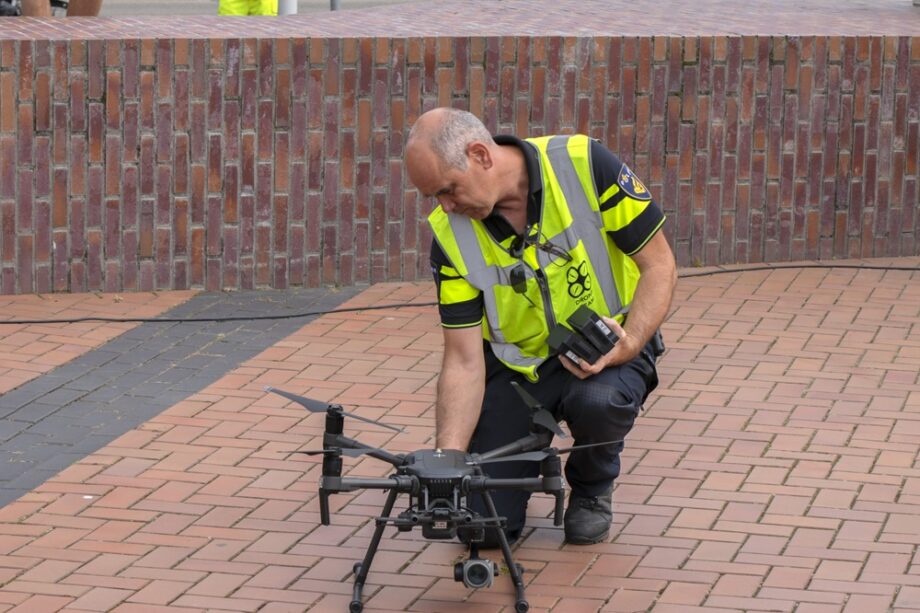National News Roundup – August 19, 2024

More Police Using Drones as First Responders
Law enforcement taps unmanned aerial vehicles as reinforcements.
A new term is becoming customary in police work: Drone as First Responder (DFR). Police departments coast to coast are flocking to the use of Unmanned Aerial Vehicles (UAVs), aka drones, as the latest tool in law enforcement. Drones are being used for a range of police tasks such as airlifting a defibrillator to an accident scene, dropping a flotation device for water rescues, surveilling crime or accident scenes before human officers can arrive. They can also assist in, or even replace the need for, high-speed vehicle chases.
Advocates say a drone can serve as a “force multiplier” – if only one officer is available when two 911 calls come in simultaneously, for example, the dispatcher can send a drone to silently track a suspect until another officer is available to respond.
Over 20 police agencies in Colorado’s “front range” (a string of large cities nestled against the eastern edge of the Rocky Mountains) use drones for tasks that include searching for missing people, mapping crime or crash scenes, providing overhead surveillance during SWAT operations, and tracking fleeing suspects.
Police in Fishers, Indiana, used a heat-seeking drone to track and apprehend a suspect after he allegedly strangled a woman, stole a gun, and led police officers on a high-speed chase.
In Chula Vista, California, drones have made nearly 20 thousand flights since 2018.
Some groups are concerned about civil rights and suggest the use of drones be accompanied by a risk analysis of how to do so without violating Constitutional rights. The American Civil Liberties Union (ACLU), for example, notes that drones equipped with facial recognition software, infrared technology, and speakers capable of monitoring personal conversations would cause invasions of privacy that could trigger litigation.
(Sources: Axios, Wired, WUSA, WTHR, Denver Post)
Air in Ice Hockey Rinks Could Pose Health Risks
Carbon monoxide cited as cause for ill players, visitors across US.
Last December, dozens of young hockey players were rushed to hospitals in the Buffalo, New York, area, with symptoms including vomiting, lethargy, and headaches. All eventually recovered fully. Similar incidents have sent ice rink visitors to the hospital in Delaware, Illinois, Ohio, and Wisconsin.
The cause seems to be exposure to high levels of carbon monoxide, which can occur in indoor ice rinks. Some state health officials say many more ice rink carbon monoxide poisoning incidents don’t make the news. Only three states—Massachusetts, Minnesota, and Rhode Island—require their ice rinks to test air quality and meet certain safety thresholds.
Most rinks use ice resurfacing machines — often known by the brand name Zamboni — and edgers that often run on propane or other fuels. Additionally, some rinks use gas-powered heaters above seating areas. Without proper ventilation, the fumes from such equipment can build up high levels of potentially toxic gases such as carbon monoxide and nitrogen dioxide.
As families around the country begin hockey training camps and wrap up registration for fall leagues, health experts note that many ice rink visitors may be unknowingly suffering from lower-level exposures that can cause long-term damage.
New York Assembly member Monica Wallace, whose district includes the ice rink where the poisoning incident occurred, drafted a bill that would require ice rink owners in the state to monitor their air quality and take steps to keep it safe. Wallace modeled her bill on the laws in effect in the states with existing ice rink air quality regulations.
Officials in those states say regulations have helped to reduce emergencies and lower the long-term exposures that can cause respiratory problems such as asthma. Some rink owners were initially skeptical about the regulations, but many now say the standards are a key framework for helping them provide a safe environment for skaters and staff.
“It doesn’t benefit anyone to have something on the nightly news about 15 kids getting loaded onto ambulances at an ice rink,” said Ed Peduto, a board member with the Massachusetts chapter of the North East Ice Skating Managers Association. “People don’t want to be regulated, but this has made rinks in Massachusetts exponentially more safe.”
(Source: Stateline)
Contact Us for More Information
The above news items are provided for informational purposes and are not intended to reflect MMRMA opinions, coverage, or risk management recommendations.
Please contact Membership Services if you have specific risk control questions or concerns.